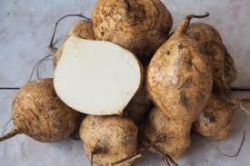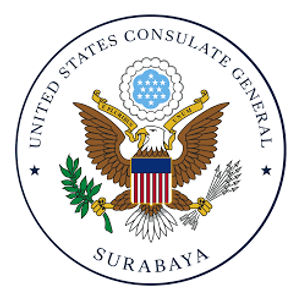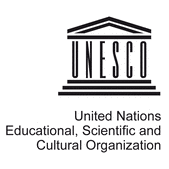Bangkuang
From BASAbaliWiki
b\ÐÛw*
Root
bangkuang
Other forms of "bangkuang"
—
Definitions
- the rhizome tapers to a rather sharp point, from which extend long, thin roots en
- the sides are smooth but may be lobed. Bangkuang are for sale almost everywhere during the rainy season, and the Balinese love to quench their thirst by munching on them. The skin is tough, but it can be stripped off the flesh quite easily. Bangkuang is similar to the jicama that is available in the produce department of Western supermarkets, but is usually smaller than jicama. en
- jicama (Leguminosae), yam bean (Mider) en
- medium climbing bush with violet flower spikes en
- produces a large, juicy, sweet tuber shaped like a beet. Tuber is a more or less conical shaped rhizome that has a thin tan skin and a juicy white flesh. It is one of th e few plants of the group that the Balinese call umbi-umbian (roots and rhizomes) that is almost always eaten raw. The flesh is crisp and has a sweetish taste, no t unlike that of a radish, but without the sharp sensation. Bangkuang vary considerably in size, from about 7 or 8 cm. in diameter at the top, up to about 15 cm. for the very largest ones en
- bengkoang; tumbuhan menjalar, berumbi putih, kaku, berbentuk gasing, kulitnya mudah dikupas, dan rasanya manis, banyak mengandung air, biasanya dimakan segar untuk rujak (asinan) dicampur dengan buah-buahan lain; besusu; sengkuang (Mider) id
Translation in English
jicama; kind of yam
Translation in Indonesian
bengkuang
Synonyms
—
Antonyms
—
Puzzles
—
Origin
—
Linked pages
—
Word audio
Level of Speech Option
Dialects
Bali Dataran
-
Bali Aga
-
Sentences Example

The salad I bought earlier did not contain jicama (kind of yam).
Balinese
Rujak ane beli tiang tuni tusing misi bangkuang.
English
The salad I bought earlier did not contain jicama (kind of yam).
Indonesian
Rujak yang saya beli tadi tidak berisi bengkuang.
Usage examples pulled from the Community Spaces
No examples collected yet.





